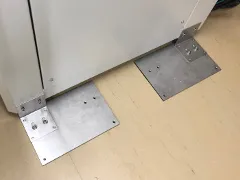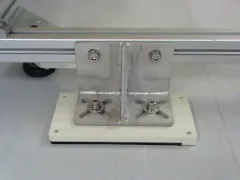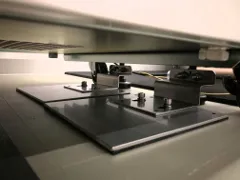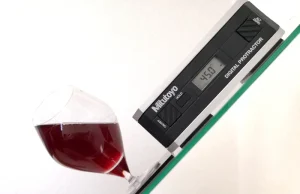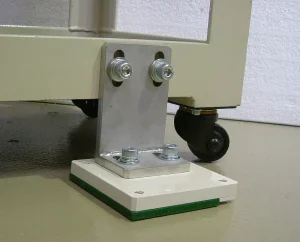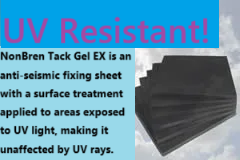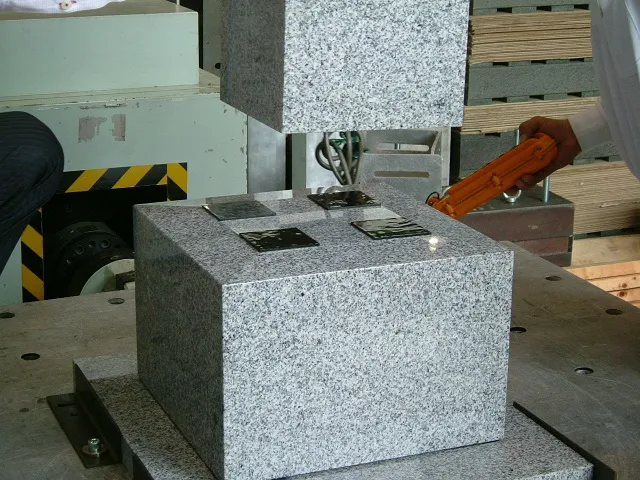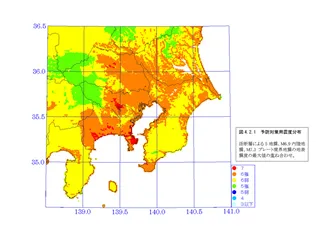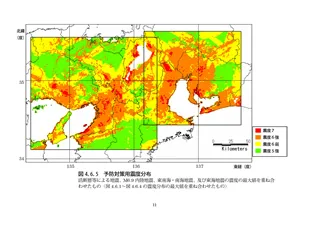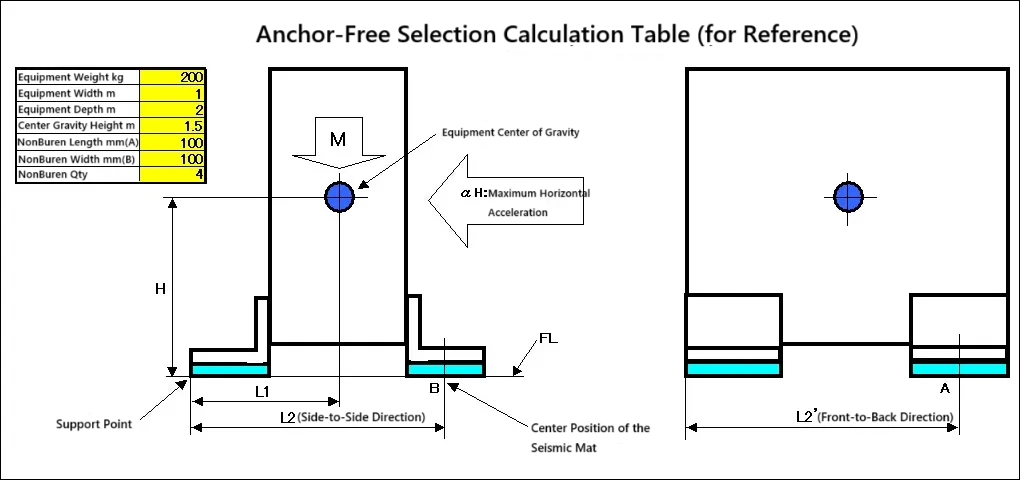- 1. Anchor-Free Seismic Restraint Without Damaging Floors or Equipment TACK GEL
- 2. What Is Anchor-Free Seismic Restraint?
- 3. What Is NonBuren Tack Gel?
- 4. Features of Anchor-Free Seismic Restraint
- 5. The Difference Between Seismic Resistance and Isolation
- 6. Determining Assumed Seismic Acceleration When Selecting Anchor-Free Seismic Restraint Materials
- 7. How to Select Anchor-Free Seismic Restraint Materials
Anchor-Free Seismic Restraint Without Damaging Floors or Equipment TACK GEL
TACK GEL is a high-performance gel that offers excellent cushioning for shock protection and strong self-adhesive properties.
Its strong adhesion allows you to secure items and prevent them from falling over, without damaging floors or equipment.
It contains no plasticizers, so it won’t harm the surfaces it touches.
And since it doesn’t give off any gas, it’s safe for use in cleanrooms.
TACK GEL solves contamination issues that often happen when installing anchors in cleanrooms—no gas, no particles, no contamination.
We also offer a special version that can be used outdoors.
Features of TACK GEL – Adhesive Mat for Seismic Restraint Without Anchors
- No anchor bolts required – no bolt marks or holes left on the floor
- Sheet size can be selected based on the machine’s size and weight
- Reusable thanks to self-adhesive properties – easy to rearrange layout anytime
- No plasticizers used – adhesive surface stays clean
- Can be cut to any size
- Selected for “Kansai Monozukuri New Selection 2013”
What Is Anchor-Free Seismic Restraint?
NonBuren Tack Gel is a self-adhesive sheet used to secure equipment as an earthquake protection measure.
It is ideal for areas where anchor bolts cannot be used or where you want to avoid damaging the floor, simply placing the sheet under the equipment provides strong and stable fixing. Unlike adhesive tapes or glue, it uses its own tackiness to stay in place, so there is no sticky residue left when removed. The sheet can also be reused. Just wash it with water and let it dry.
It is suitable for use under manufacturing equipment and in cleanrooms. Since it requires no anchor bolts, equipment layouts can be changed without damaging the floor.
What Is NonBuren Tack Gel?
NonBuren Tack Gel is a product that originated as a byproduct of our anti-vibration material, NonBuren.
NonBuren is made from polyurethane gel and is known for its adjustable hardness. Softer types of NonBuren naturally have tackiness, and this unique characteristic was enhanced to create NonBuren Tack Gel.
It functions like what is commonly referred to as an “Earthquake-resistant mat”, “Earthquake-resistant gel”, or “anti-tip gel”. However, it stands out for its easy handling due to its firmness and its strong adhesive properties.
Features of Anchor-Free Seismic Restraint
Strong Adhesive
-
Tack Gel offers extremely strong adhesion, making it difficult to remove once applied.
However, it also features a clever design that allows for easy removal without special tools. (Patent acquired)
It is completely plasticizer free, meaning no chemical migration occurs and it will not damage or dissolve the surfaces it contacts. Made from safe materials without using plasticizers, Tack Gel combines strong adhesion with sufficient mechanical strength.
In contrast, products from other manufacturers that use plasticizers or alter the chemical balance to achieve tackiness may initially feel soft and sticky, but they lack durability.Over time, plasticizers can degrade through hydrolysis, and imbalances between polyol and isocyanate can reduce long term performance, often causing the material to break down or melt.
Tack Gel, on the other hand, maintains its performance over time.If it gets dirty, simply wash it with water and let it dry. The adhesive strength will be restored, allowing for repeated use.
Excellent Seismic Resistance
-
Tack Gel is made from the same polyurethane gel used in our anti-vibration material, NonBuren.
It shares similar vibration damping properties with the 30-degree hardness version of NonBuren.
It is also effective when you want to prevent even small vibrations from being transmitted to the equipment.
Weather and Water Resistance for Outdoor Use
-
We offer a special version of NonBuren Tack Gel designed for outdoor applications.
Tack Gel EX is a unique adhesive sheet developed specifically for outdoor use.It has passed weather resistance tests for UV exposure and rain, making it suitable for environments where standard products may fail.
Tack Gel EX has a strong track record in applications such as securing gravestones, where outdoor durability is essential.
※Please note that usage conditions may apply, so a prior consultation is required.Example Applications- Securing solar panels and other outdoor installations
- Fixing signs or banners placed outside shops
Seismic Restraint for Gravestone
This is an example of outdoor use.
Our Seismic resistant mat is placed between the layers of a three-tiered gravestone.
The setup was tested using a vibration simulator that reproduces the shaking of the Great Hanshin-Awaji Earthquake.
The Difference Between Seismic Resistance and Isolation
Seismic resistance refers to a strong, rigid structure that can withstand shaking.
In contrast, Seismic isolation refers to a structure designed to reduce the impact of seismic forces by absorbing or deflecting the shaking.
Our Tack Gel is an adhesive gel sheet developed specifically for seismic resistance.
We propose using our NonBuren Tack Gel to prevent equipment from tipping during seismic activity by securing it with adhesive gel instead of anchor bolts.
In environments where anchoring to the floor is not possible, the tackiness of the gel provides secure floor fixation.
We offer anchor-free seismic restraint as a practical solution.
Determining Assumed Seismic Acceleration When Selecting Anchor-Free Seismic Restraint Materials
How to Select Anchor-Free Seismic Restraint Materials
Setting the Earthquake Resistance Class
In some cases, anchor bolts cannot be used, for example in cleanrooms (where contamination must be avoided) or on upper floors (where the floor may lack sufficient strength). For such situations, we propose an anchor-free seismic restraint using NonBuren Tack Gel, which allows equipment to be easily secured to the floor with a highly self-adhesive gel sheet.
The adhesive strength of NonBuren Tack Gel is comparable to the pull-out strength of anchor bolts.
When using Tack Gel for seismic restraint, the resistance class is determined based on the Guidelines for Seismic Design and Construction of Building Equipment by the Building Center of Japan.
If a specific seismic acceleration (in gal) is provided, we will simulate the equipment’s stability under shaking and calculate the appropriate gel size.
About Seismic Calculations
- When assuming Seismic Class A, the expected seismic acceleration varies depending on the floor level where the equipment is installed, even under shaking equivalent to seismic intensity 6-upper on the Japanese scale.
Basement and 1st floor: coefficient 0.6 → approx. 600 gal
Middle floors: coefficient 1.0 → approx. 1000 gal
Upper floors, rooftops, and penthouses: coefficient 1.5 → approx. 1500 gal
※For reference, during the Great Hanshin-Awaji Earthquake, the maximum observed accelerations in Chuo Ward, Kobe were 818 gal (north-south), 617 gal (east-west), and 332 gal (vertical). - Based on the equipment’s weight, dimensions (width, depth, and center of gravity height), we calculate the horizontal moment at each assumed seismic acceleration level.
- By comparing this with the vertical moment, we determine the required size and quantity of Tack Gel.
- A report like the one below will be provided to show the basis for these calculations.
Adhesion Strength to the Floor
The adhesive strength between Tack Gel and the floor, which is necessary for seismic calculations, varies depending on the floor material and condition.
Typical values are shown below.
※If you wish to use Tack Gel for seismic restraint, we will measure the adhesive strength of your floor surface using a dedicated tester.
Even if the floor surface is uneven, such as unfinished concrete, Tack Gel has enough thickness to conform to the irregularities and still provide a secure bond.
Compared to thin double-sided adhesive tapes, Tack Gel can absorb surface unevenness to a greater degree.
Example of Adhesive Strength
| NonBuren Tack Gel | Stainless Steel (2B Finish) | PVC Plate (Skin Layer) | P-Tile (General Flooring) |
|---|---|---|---|
| Per Unit Area(kgf/mm2) | 0.014 | 0.015 | 0.017 |
| □Equivalent for 100 mm square(kgf) | 140 | 150 | 170 |
On request, we can visit your site to measure the adhesive strength.
For more details, please feel free to contact us.
